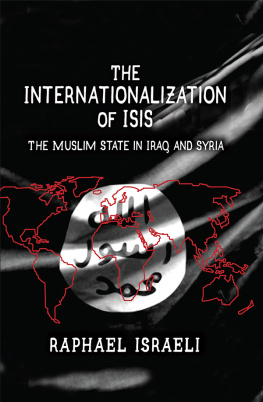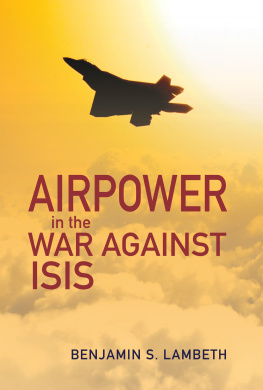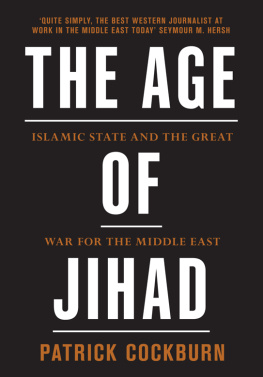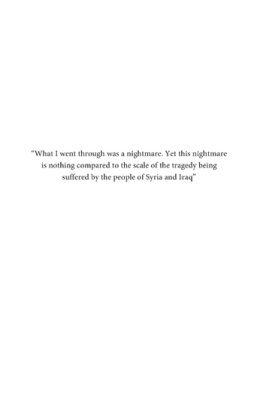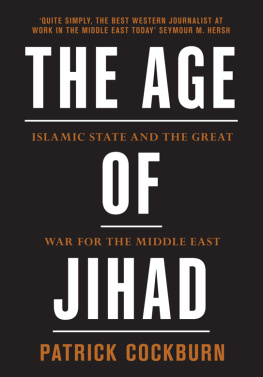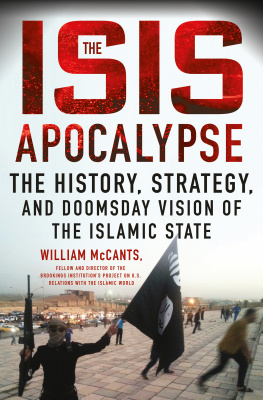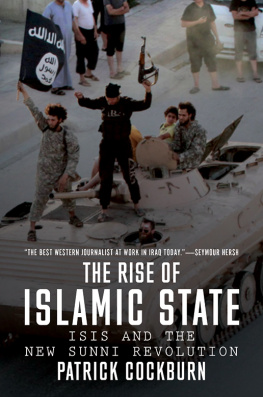
The Wests War Against
Islamic State
For Aurelia

Contents
One of the joys of academic life is seeing a project morph over time. I never intended to write a book about Operation Inherent Resolve. I wanted to develop my previous work on proxy war by exploring in greater detail how the US and its allies after 2014 had decided to fight ISIS vicariously through a network of proxies. But it soon became clear that the indirect approach to degrading ISIS was only part of a wider story that involved limited kinetic action via an air campaign, pockets of special forces teams on the ground, and a web of cyber operatives trying to limit ISISs online potency all against the backdrop of contending interventions by rival powers including Russia and Iran. What started out as a short article gestated into the short book in your hands today. My sincere thanks go to Tomasz Hoskins, my editor at IB Tauris, for encouraging me to chronicle this war more holistically.
As always my colleagues in the School of Politics and International Relations at the University of Nottingham, especially those affiliated to our Centre for Conflict, Security and Terrorism (CST), have proven to be a superb sounding board for the ideas and arguments you will read in this book. I am immensely grateful to the many students who have taken my Contemporary Warfare postgraduate class who, since 2014, have incisively discussed the implications of the rise of ISIS and the Western response with me. Omissions and errors of course remain squarely with me.
I would also like to thank my fellow panellists and audience members for feedback on previous iterations of some of the material in these chapters, especially at the 2018 European International Studies Association conference in Prague and the 2019 Society for Terrorism Research conference in Oslo.
I remain permanently indebted to my wonderful family for their support and inspiration my wife Hannah and our daughters Elodie and Aurelia, to whom this book is dedicated.
Amidst the chaos of the withdrawal of American combat troops from Iraq in 2011, the insurgent group al-Qaeda in Iraq (AQI) morphed into the Islamic State of Iraq and Syria (ISIS). Having used its paramilitary force to take control of territory across both nations in the subsequent years, ISIS declared the foundation of a caliphate stretching across 423 miles of Iraq and Syria on 29 June 2014. In response, a 74-nation Global Coalition was formed in September of that year. This coalition became the umbrella organisation that would support the US-led Combined Joint Task Force Operation Inherent Resolve (CJTF-OIR), established in October 2014 to co-ordinate the multi-national response to the ISIS threat. This book is an initial attempt at understanding the conduct and consequences of that response.
At its zenith in 2015, ISIS governed over 11 million people with an income equivalent to the gross domestic product of Liechtenstein. a loss equivalent to going from the landmass of the United Kingdom to that of downtown Manhattan. This book will trace how Operation Inherent Resolve facilitated this decline, and assess how the strategic imbalance between coalition provision of air power and train-and-assist missions compared to the ground war fought by proxies in various militia groups.
Methodologically this study is empirical and inductive, utilising an extensive amount of authoritative open-source primary and secondary material to make a short contribution to the first draft of history written about the war against ISIS. In many ways the book represents an unofficial campaign history of Operation Inherent Resolve, breaking down the operational components of the anti-ISIS fight into separate chapters in order to build a comprehensive analytical assessment of the military effort (and its political management) to destroy the self-proclaimed caliphate of ISIS. Operational histories are not especially in vogue in war studies circles right now, but they are important as they offer a snapshot of contemporary strategic culture. Understanding Operation Inherent Resolve allows us to go some way towards understanding how, by the second decade of the twenty-first century, Western political perceptions of risk management had become ubiquitous. It reveals how the long shadow cast by the 2003 invasion of Iraq still hung over Western willingness to militarily engage in large-scale warfare with an irregular enemy. It reveals a strategic preference for a mix of limited kinetic action (lower-risk air strikes and an increasing reliance of Special Operations Forces [SOF]) and a dependence on proxies to take the fight to ISIS on the ground. The result was an uncomfortable strategic premise for Operation Inherent Resolve: defeat ISIS but without expending too much conventional force whilst displacing the highest kinetic risk to others.
It is worth quickly stating what this book will notbe. It will not be a book that substantially reflects on the ideology, structure, or operational performance of ISIS itself. This has already been masterfully done by other authors with a specialist knowledge of Islamist terrorism. Raqqa that marked the territorial collapse of the caliphate in 2017, to the withdrawal of American forces from Syria by President Trump in 2019. It should also be noted that throughout this book the label ISIS will be used. Although the group formally changed its name to simply the Islamic State in 2014, the diverse nomenclature that pervades the literature on the group (ISIS, IS, ISIL, Daesh) has been made uniform in the name of simplicity.
Next page


